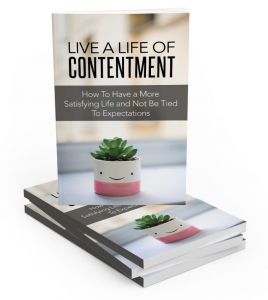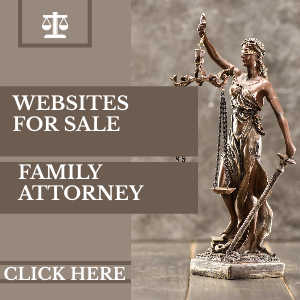Every digital agency is actively seeking new ways to improve their clients’ marketing performance.
While your digital marketing strategy may emphasize improving SEO, increasing click rates, and decreasing bounce rates, there exists an often-overlooked approach that many agencies miss.
There could be a hidden treasure trove for conversion rates right before you.
But first, you’ll have to clear the path by removing hidden barriers on your site.
Check your website for those violations now >>
Here’s everything you need to know about accessibility, and what you can do to boost your clients’ performance.
The Untapped Part Of Your Marketing Strategy
A powerful component of a holistic marketing strategy that has untapped potential to boost performance and engagement is web accessibility.
So, it’s highly likely that most of your competitors have not added this to their web strategy – giving you a potential instant advantage by implementing it.
But what exactly is web accessibility? And is your website accessible?
How Does This Impact Marketing Strategy?
By making your clients’ websites easier to understand, navigate, read, and crawl, you’ll naturally gain:
- Expanded site reach: Significantly expand your client site’s reach, ensuring inclusivity and a superior user experience for all. In fact, 1.3 billion people live with some form of disability; by adding web accessibility you’re potentially gaining scores of new users for your clients’ target audience.
- Dialed-in user experience: By refining the web experience to cater to every individual’s unique requirements, especially for those with disabilities, you naturally create a faster, cleaner experience for all users.
- Improved navigation: By eliminating barriers that might obstruct smooth navigation, you’ll naturally create an optimized on-site link structure.
Do any of these sound familiar?
If you’re dialed into SEO and Core Web Vitals (CWV), you’ll recognize these as contributing factors of ranking signals.
So, when you’re looking to enhance your value proposition and amplify client results, web accessibility is a game-changer. Not only does it foster digital equality, but it also drives tangible marketing results.
4 Steps To Boost Website Performance By Improving Web Accessibility
Web accessibility and your agency’s marketing performance share the same DNA.
Think of them as two sides of the same coin or, better yet, as kindred spirits in the website world.
Here are four common performance-boosting components that are linked to embedding accessibility into your client sites.
Step 1. Add Alt Text For Improved Search Visibility
Search engines have a soft spot for accessible websites.
When your clients’ websites are accessible, they are also telling the search engines what they want to hear.
For example, properly labeled images improve both accessibility and image searchability. Alt text is critical to convey information in images and illustrations to make sure people using assistive technology can get the maximum context and understanding of the overall content.
How To Write High-Impact Alt Text
To improve your search visibility and increase the chances of your clients’ websites showing up higher on more search engine results pages (SERPs):
- Understand which images are informative, decorative, functional, or complex.
- Identify informative images, then write the text alternative for images using the essential information, describing it in detail. Don’t forget to include the emotional implications of the image.
- Filter out decorative images, like a flourish or stylistic elements that lack meaningful context. Then, write the alt text as “null” as in, <img alt=””> so that screen readers won’t waste users’ time by announcing it.
- Take your functional images, which describe what happens when you click an image, like the ‘download’ icon. Then, make sure your alt text doesn’t describe those images but instead, denotes their functionality.
- Grab your complex infographics or diagrams, then compose alt text describing the information laid out in the images.
The Easy Way
It’s labor-intensive to manually go back and write descriptions for the hundreds or thousands of images on your site. Instead, save time and money and let UserWay’s automated Image Alt tool generate the alt text for you, using AI. This is one of the most popular features of UserWay’s AI-Powered Accessibility Widget.
Alt Text Best Practices
To make sure your alt text provides your readers with everything they need to understand, and make sure search engines can rank your clients’ content:
- Less is more: Ensure the length of alternative text is under 125 characters when possible, spaces included.
- Don’t skimp on quality: Pay close attention to the accuracy of the information and insight the image provides in that short amount of words.
- Don’t use images of text, whenever possible, except in logos. If used, the image alt text should include the same words as in the image.
- For image maps, with multiple clickable areas, a group alt text gives the overall context of the map. Any clickable area should also have its own individual alternative text, describing the link’s destination and purpose.
- Don’t ever assign a random, vague, or ambiguous alternative text description to an image simply to increase your accessibility score. This could lead to confusion and frustration for a screen reader user. Alt text accessibility is rooted in providing meaningful and functional alternative means of usability. Poor or random alt text descriptions can arguably be worse than having no alt text at all.
Step 2. Create Clear Header Structure: Best Practices For Increased Rankings & Better Content Understanding
Similarly, clear heading structures laid out in the proper order aid screen readers and search engine bots alike.
The result? You may see a boost in rankings that can set your agency a notch above your competitors.
How To Write Keyword-Driven Headers – Best Practices
A great keyword and header structure strategy can improve your clients’ performance in the long run, on more search engine results pages (SERPs). It will also help every website visitor find exactly what they’re looking for.
- Place main and secondary keywords so that both search engine bots and readers can understand the content on your clients’ pages.
- For keywords in headers, you need to balance your SEO and accessibility considerations. For example, while you need your target keywords to appear, it’s important to make sure the phrasing and context are also simple to understand and direct.
- Structure your headers in the right hierarchy so that screen reader users, for example, can easily navigate content without wasting their time. That means tagging your H1 and H2’s so that content is read out in the right order, and more easily navigable.
- Don’t forget that headings must be laid out in the right order, meaning, in a sequential way. So no skipping around from H1 directly to H3.
Step 3. Strengthen UI/UX: Scan For Accessibility Barriers To Improve Your Site For All Visitors
Accessibility directly influences a huge ranking factor of websites – the user experience.
With 88% of digital visitors vowing never to return after one poor site experience, it’s clear that accessibility isn’t just a nice-to-have, it’s essential. Read on to find out how fixing accessibility issues has been linked to boosted performance.
How user-friendly are your clients’ sites, especially for people with disabilities?
Are you ensuring all users enjoy an intuitive browsing experience?
UI/UX Best Practices
These best practices range from employing certified testers using assistive technology to test your site, all the way to automated tools that instantly check your accessibility score.
- Employ certified testers to create real use cases using assistive technology, like eye trackers, different brands of screen readers, or braille readers.
- Schedule your manual testing on a recurring basis, at least once or twice a year, so that you can maintain your high standards of usability as your content evolves.
- Augment manual testing with real-time automated scanning of web pages that can work in the background, and alert you to any changes in usability.
The Easy Way
Reputable digital accessibility platforms like UserWay combine the best of both worlds, from automated accessibility scanning, monitoring, and alerting, all the way to IAAP-certified auditors who do a deep dive into your websites. Learn about accessibility audits here.
Step 4. Naturally Improve Conversions
Nothing speaks louder than solid conversion rates.
They’re the definitive measure of a campaign’s effectiveness in turning interest into measurable results.
Let’s look at a case study of how one business builds accessibility into its client websites and sees improved conversion results.
Case Study: How Natural Intelligence Amped Up Conversions With UserWay
Meet Natural Intelligence, the company behind big names like Top10.com and BestMoney.com. Founded in 2009, they’ve made it their mission to simplify your decision-making, influencing 50 million consumer choices annually on their sites globally.
The Challenge:
While boasting a 60-strong product team obsessed with delivering top-notch consumer experiences, they hit a snag: making their sites welcoming for everyone. They tried to find a solution that catered to both web accessibility and performance but it was like ‘hunting for a unicorn’.
The Solution:
UserWay’s AI-powered Widget changed the game for Natural Intelligence, enabling them to achieve their accessibility and compliance goals. And the numbers? They speak for themselves. Within months of collaborating with UserWay, Natural Intelligence saw a significant boost in its metrics:
- Click Rates: Up by 1.0%.
- Bounce Rates: Down 0.5%.
- Earnings per Click: Boosted by 2.4%.
- Earnings per Visitor: A rise of 3.5%.
The connection between web accessibility and higher conversion rates isn’t just coincidental — it’s consequential.
Natural Intelligence’s client sites are now more inclusive than ever, engaging more users and racking up credibility points.
So, when strategizing for the next big boost in conversions and revenue, ask yourself: Is web accessibility a part of your digital strategy?
 We all want to be satisfied, even though we know some people who will never be that way, and others who see satisfaction as a foreign emotion that they can’t hope to ever feel.
We all want to be satisfied, even though we know some people who will never be that way, and others who see satisfaction as a foreign emotion that they can’t hope to ever feel.
Newspaper Ads Canyon Crest CA
Click To See Full Page Ads
Click To See Half Page Ads
Click To See Quarter Page Ads
Click To See Business Card Size Ads
If you have questions before you order, give me a call @ 951-235-3518 or email @ canyoncrestnewspaper@gmail.com
Like us on Facebook Here
What should Google rank in Search when all the content sucks?
Many people have an incredibly low bar for what they consider to be “great” content that...
Google Search Wants To Reward The Best Content No Matter The Size Of The Site
For the past 20 years, probably even longer, the debate about Google giving preferential...











0 Comments